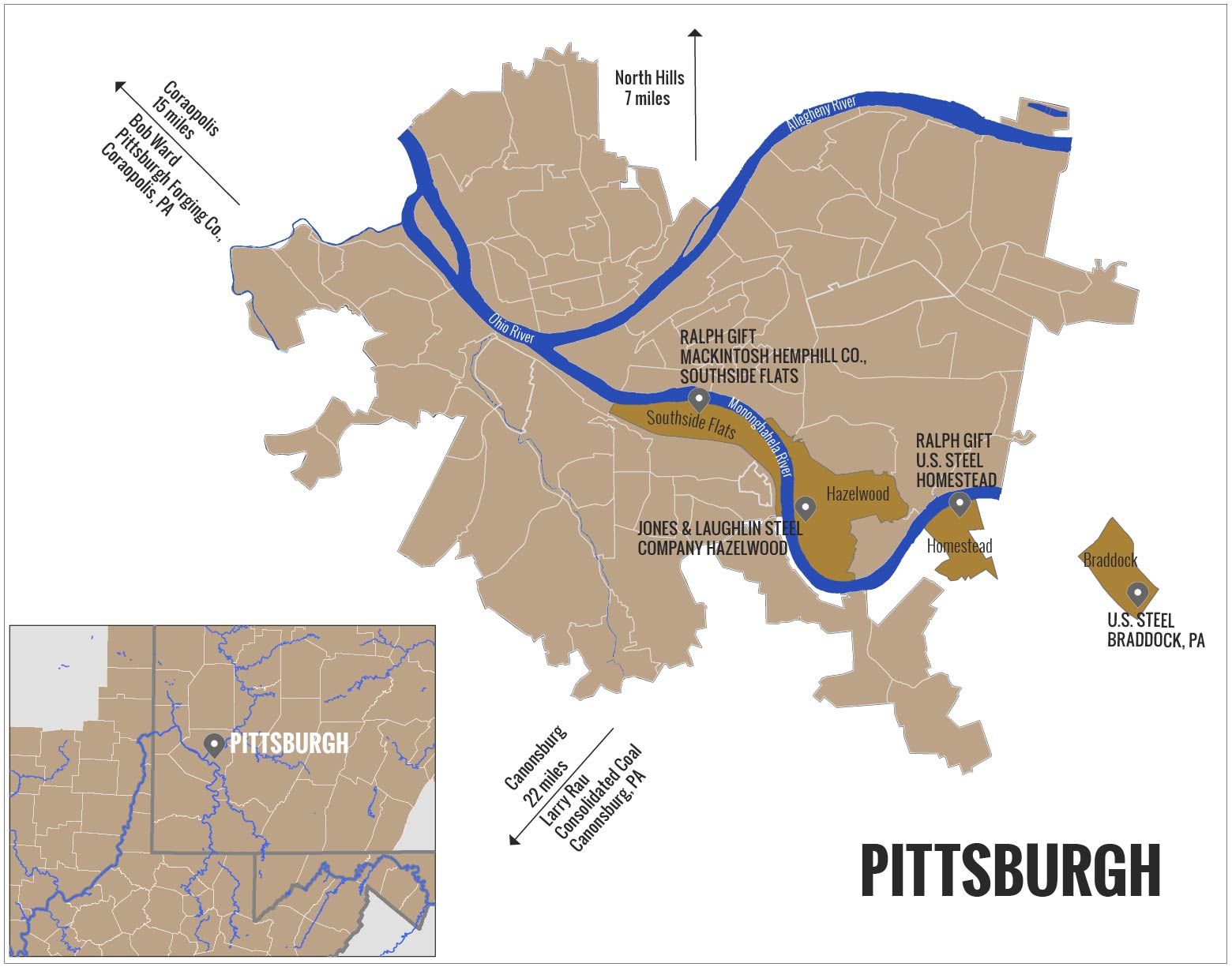RESILIENT AS THE STEEL IT FORGED
Pittsburgh, Pennsylvania

The smokestacks that loom over Pittsburgh’s Waterfront shopping area are a juxtaposition of past and present, working class and upper class, and a reminder of what flourished and left. Steel came to Pittsburgh in the second half of the 19th century bringing jobs for people in the city, while the Pittsburgh coal seam southeast of the city supplied work to people in 53 counties, fueling the city’s industry and local Appalachian economies alike. The steel industry continued to grow until the industry’s peak during World War II. But in the mid-1980s, the steel industry headed to Mexico and elsewhere, leaving doubt that the city would recover.

Jobs in the mills ranged from shoveling sand for seven hours a day to the tedious task of operating an overhead crane, and from laborers to foreman in the mines. Steel mills had dirty and dangerous working conditions, and the labor was strenuous. Most steel mills operated 24 hours, as people took shifts making sure every step of the process was always attended to. But at the end of the day, it was honest work, and a way to earn money to provide for the family.
Larry Rau - former coal miner and foreman
Bob Ward - former steel mill employee
Despite difficult work and conditions, the strong sense of camaraderie existed in the mills. Entire neighborhoods were built up around the prospering mills, promoting strong local economies and communities ties. Gift remembers his childhood community fondly. “You grew up here, and everybody was family. I had four uncles on one street. So it was a great community growing up back then.” Workers took pride in a hard day’s work, knowing that they were providing for their family.
Bob Ward- former steel mill employee
Although the working class and economy seemed prosperous in the 1970s, strong unions in the steel mills and competition from manufacturing in places like Japan and Germany forced industry leaders to look elsewhere for cheaper labor. From 1979 to 1987, the Pittsburgh region lost 133,000 manufacturing jobs, causing closures of railroads, mines and other factories. Rau recalls seeing “good people being laid off, people there much longer than [him].” When the steel mills left, communities diminished, giving people and businesses no option but to seek opportunity elsewhere. However, Pittsburgh locals are resilient and plenty of others like Gift, Ward and Rau chose to remain in Pittsburgh.
Ralph Gift- former steel mill employee
Today, Pittsburgh has a diversified economy, a low cost of living, and a rich infrastructure for education and culture. Ranked as one of the World’s Most Livable Cities by The Economist and Forbes, Pittsburgh is also considered among the most resilient cities and top comeback cities by Grosvenor and Forbes, respectively. The downturn of the industry hurt Pittsburgh’s economy and people, but the city has come back, and people remain attached to the city and their pride. Pittsburgh is a city that is as resilient as the steel it forged.